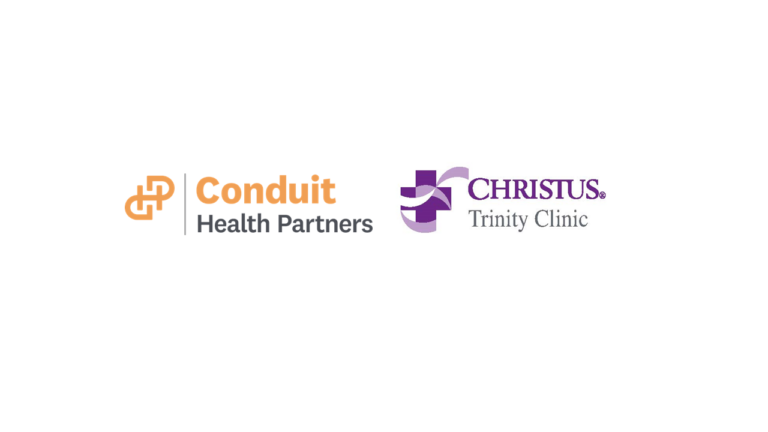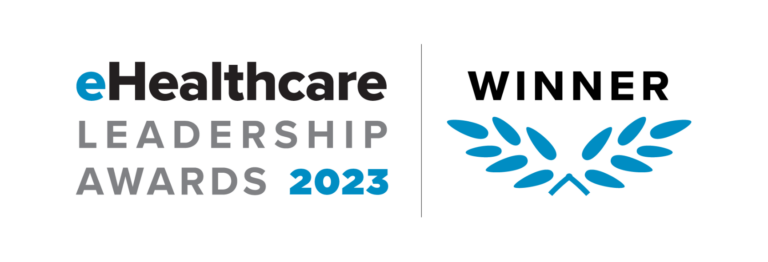
Recent News

Preventing Readmissions Starts Before Discharge: The Role of Nurse-First Triage
Hospital readmissions are a persistent challenge for health systems across the country. Nearly one in five Medicare patients is readmitted within 30 days of discharge,
5 Tips To Optimize Your Transfer Center
Optimizing your health care transfer center is a crucial step in enhancing patient flow, reducing wait times, and improving overall care coordination.

Behavioral Health Collaboration Reduces Emergency Department Length of Stay by 64%
Focus on timely transfer for acute behavioral health patients improves patient safety and outcomes
A recent collaboration between Conduit Health Partners and Mercy Health — Springfield Regional Medical Center has significantly streamlined care transfers of behavioral health patients from the emergency department (ED) to appropriate care settings.

Optimize Transfer Center Practices to Improve Patient Acquisition Whitepaper
Health care is changing. Fast. But one constant remains — the challenge of managing the flow of patients in and out of your hospital or health system.
Even before COVID-19, patient transfers were problematic for most hospitals and health systems. Then, the pandemic added more strain. Finding the best way to handle patient flow has become increasingly difficult, with higher patient volumes and staff shortages.

CHRISTUS Health and Conduit Health Partners Expand Access to Care
Collaboration with CHRISTUS Trinity Clinic brings after-hours nurse triage to CTC communities
CINCINNATI, Ohio and IRVING, TX (Oct. 9, 2023) — CHRISTUS Trinity Clinic, the medical provider group of CHRISTUS Health, is collaborating with Conduit Health Partners to bring after-hours telephonic nurse triage care to their patients through Conduit’s nurse-first model where callers have immediate,

Bridging Gaps in Care: FQHCs Embrace Tech on the Front Lines
Federally Qualified Health Centers (FQHCs) serve as lifelines for millions of underserved Americans, offering vital access to health care. Yet, the challenges of delivering efficient and effective care persist, especially when faced with complex patient needs and limited resources. However, an article in Healthleaders shares a new wave of technology is revolutionizing the way FQHCs operate,

Navigating the Intersection of Nursing and Technology in Health Care
In the ever-evolving world of health care, technology is a game-changer in patient care. Nurses, consistently ranked as the most trusted professionals for the past two decades, now find themselves at the intersection of traditional care and cutting-edge technology.

Paving the Way for Value-Based Care: The Role of Nurse Triage in Strengthening Payer- Provider Alliances
The healthcare industry is at a pivotal moment where stronger collaborations between payers and providers can yield significant benefits. The relationship between improved payer-provider collaboration and high-quality, affordable care is well-established. However, findings from the American Hospital Association (AHA) reveal variations in the development of true partnerships for value. One notable challenge is the historical distrust between payers and providers.

Bridging Health Care Disparities: The Role of Nurse-First Triage in Rural Communities
For rural residents of America, the challenge of achieving health equity is glaringly evident. Imagine driving two hours through a mountain pass to be near a hospital when contractions begin, or having to travel hours for cancer trials and treatments. These are not isolated incidents but indicative of a broader issue where rural residents face significant health care disparities.

Conduit President Explores the Role of Nurse Triage in Reducing Health Disparities
Cheryl Dalton-Norman, president of Conduit Health Partners, recently talked with Mark Hagland, editor-in-chief of Healthcare Innovation, to discuss social determinants of health and population health. In this fireside chat, “The Power of Nurse Triage to Reduce Health Disparities and Drive Proactive, Impactful Care,” Cheryl discussed how Conduit’s Nurse-First triage solutions can help reduce health care disparities.

Redefining Access to Care: The Role and Benefits of After-Hours Triage Services
At 3 a.m., a baby’s fever can worry a new mom or dad. So much so, they may consider a trip to the nearest emergency department (ED) entirely prudent.
The question is: Is it truly necessary?
With Conduit’s Health Partners’ Nurse-First Triage Services, the answer is just a quick phone call away.

Conduit Wins eHealthcare Leadership Award
Conduit Health Partners is excited to share that we have received an eHealthcare Leadership Award for our Search Engine Marketing Nurse Triage digital campaign. Conduit was awarded Platinum, which is best in class of “Other Healthcare Sites.”
The eHealthcare Leadership Awards recognize outstanding health websites and digital initiatives, highlighting the role of digital communications in achieving health care organizations’ business objectives.

Aspects of Social Determinants of Health
The conversation in health care is evolving from a focus on treating illnesses to a more holistic approach that considers the social determinants of health (SDoH). These determinants encompass various factors such as income, education, employment and access to resources, all of which significantly impact an individual’s overall health. In an interview with Healthcare IT Today,

Immediate Access to a Nurse After Hours with Conduit Health Partners
Access to health care and medical assistance has become more critical than ever. People want to reach out to medical professionals even after regular business hours and health care organizations want to best serve their patients while managing costs. Cheryl Dalton-Norman, president of Conduit Health Partners, was featured on the Price of Business podcast discussing the significance of immediate access to a nurse after hours and how it can make a remarkable difference in health care.

How a Nurse-First Triage Model Can Reduce Unnecessary ED and Urgent Care Visits
In an article with PSQH, Dusti Browning, vice president, Growth and Client Solutions at Conduit, shares that already unsustainable care costs will rise yet another 5% or higher this year, not including the increase in premiums many organizations have experienced. To counter the impact, one out of five employers

The Power of Health-at-Home Care
In a Managed Healthcare Executive article, Cheryl Dalton-Norman, president of Conduit, and David J. Muzina, interim chief medical officer at Medical Mutual, share the collaborative approach to health-at-home care, through Conduit’s nurse triage services, a transformative model that is changing the game in health care delivery.

The Growing Trend of Outsourcing in Health Care
In the ever-evolving health care landscape, hospitals are increasingly turning to outsourcing as a strategic move to optimize operations, enhance patient care and achieve financial sustainability. In a Managed Healthcare Executive article, Cheryl Dalton-Norman, president of Conduit Health Partners, shares her expertise on embracing outsourcing for enhanced patient care and operational excellence.

Conduit Leader, Dusti Browning, Featured in Patient Safety & Quality Healthcare (PSQH)
Dusti Browning, vice president of growth and client solutions at Conduit Health Partners, was featured in an article on Patient Safety & Quality Healthcare (PSQH) about “‘Tripledemic’ Reveals Critical Need for Better Patient Triage and Transfer Services.”

Improve Health and Satisfaction with Patient Transfer Solutions
No one can deny that the COVID-19 pandemic put unprecedented strain on the health care system. In its wake came the current “triple-demic” of COVID, flu and RSV, coupled with a severe nursing shortage. Added to these strains, hospitals face a decrease in licensed beds, shrinking margins and supply chain issues.
Meanwhile, patient transfer processes can disrupt your emergency department’s (ED) efficiency. Your ED doctors and nurses work tirelessly to help patients but are often distracted by managing transfers. A lack of available beds, delayed acceptance from neighboring facilities and limited transportation options often leave patients waiting hours for care.

Conduit Health Partners Brings Patient Transfer Center to Watertown Regional Medical Center
Conduit’s team will connect patients to the right care 24/7
Cincinnati, Ohio and Watertown, Wis. (Jan. 16, 2023) — Conduit Health Partners, a health care solutions company that connects patients to the care they need, when they need it, will collaborate with Watertown Regional Medical Center (WRMC) to maximize efficiency and promote ease of access,

Why Choose a Centralized Patient Transfer System
Managing patient transfers is complex, challenging and potentially inefficient. It can be time-consuming and difficult to measure the effectiveness of your transfer processes. If you can’t see potential problems, you can’t make improvements. Learn why you should choose a centralized patient transfer system today.

Improved Transfer and Call Center Services Promote Service Line Growth for a California Health System
After partnering with Conduit Health Partners, a nonprofit integrated health system in California saw significant improvements. Read the full patient transfer center case study.

How to Increase Health System Patient Retention with Patient Transfers
Patient transfers are a necessary function that can be inefficient and frustrating. Your transfer processes, both referring and receiving patients, can significantly impact your reputation. Efficient patient transfers may increase patient acquisition, as well as retention.

Revolutionizing Rural Health Outcomes: The Impact of Nurse-First Triage
In health care, innovation isn’t confined to high-tech cities and urban hubs. The transformative power of modern medical approaches is reaching even the remotest corners of our society, and one such advancement that’s making waves is Conduit’s Nurse-First Triage. In an interview with Kevin Price on the Price of Business Show, Cheryl Dalton-Norman, president of Conduit, shares Conduit’s approach to changing the game for rural health outcomes, bridging the gap between limited resources and quality care.

Revolutionizing Health Care Delivery and Patient Care
The COVID-19 pandemic shed light on the critical challenges hospitals face when it comes to transferring patients to facilities that can provide a higher level of care. However, this issue existed long before the pandemic. Cheryl Dalton-Norman, president of Conduit Health Partners, recognized this problem and set out to solve it back in 2017. Her nurse-first triage and transfer service aimed to streamline patient transfers and ensure timely access to appropriate care.

Providing FQHCs with Nurse Triage Services
At Conduit Health Partners, we’re proud to partner with Federally Qualified Health Centers (FQHCs) to help improve access to care for their patient population.

How to Position your Health System for the Future
In an article with MedCity News, “Key to Health System Success: An Entrepreneurial Mindset,” Cheryl Dalton-Norman, Conduit President, shares that incorporating elements of risk that complement a health system’s vision, health care leaders can drive a sustainable growth strategy that benefits patients and staff and better positions the organization for the future.

Working together to transform care
Medical Mutual, Conduit and DispatchHealth are at the forefront of transforming health care. Medical Mutual identified a need in its member population and brought together innovative companies in the health care space to help achieve their goals. Working together, these three organizations have positively impacted the Medical Mutual member population.

Conduit solutions featured in a Q & A with The Journal of mHealth
Challenges with patient triage and access existed before the “tripledemic,” defined as the recent surge in flu, RSV and COVID-19 cases. However, the “tripledemic” highlighted weaknesses in healthcare’s ability to handle the surge of patients.
What role does nurse triage play in preventing unnecessary emergency department visits and supporting health care value?